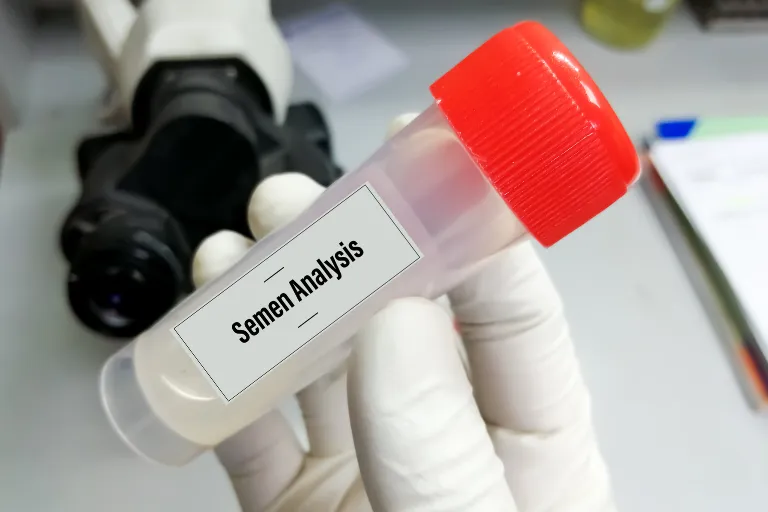Monitoring semen health is crucial for understanding overall male fertility. Evaluating key indicators can provide insights and help identify potential issues early. This guide outlines the essential indicators to monitor and offers steps for improving semen health.
Semen Volume
Explanation: The volume of semen is a vital indicator of reproductive health. Low volume can indicate an underlying issue.
💡 Tip: Stay hydrated and maintain a healthy diet rich in fruits and vegetables to support semen production.
Benefit: Adequate semen volume increases the likelihood of successful fertilisation.
Sperm Count
Explanation: Sperm count refers to the number of sperm present in a given semen sample. A higher count generally indicates better fertility.
💡 Tip: Avoid excessive heat exposure, such as hot baths or tight clothing, which can negatively impact sperm count.
Benefit: Maintaining a high sperm count improves the chances of conception.
Sperm Motility
Explanation: Sperm motility measures the movement and swimming ability of sperm. Higher motility means sperm can reach and fertilise the egg more efficiently.
💡 Tip: Regular exercise and a balanced diet can enhance sperm motility. Avoid smoking and limit alcohol consumption.
Benefit: Increased sperm motility boosts the chances of successful fertilisation.
Sperm Morphology
Explanation: Sperm morphology refers to the shape and structure of sperm. Abnormal shapes can affect the ability to fertilise an egg.
💡 Tip: Incorporate antioxidant-rich foods, such as berries and nuts, into your diet to improve sperm morphology.
Benefit: Healthier sperm shapes lead to higher fertility potential.
Semen pH Level
Explanation: The pH level of semen should be slightly alkaline to support sperm health. Abnormal pH levels can indicate infections or other issues.
💡 Tip: Maintain good hygiene and stay hydrated to support a balanced pH level.
Benefit: Optimal pH levels create a favourable environment for sperm.
Semen Colour and Consistency
Explanation: Normal semen is typically whitish-grey and has a gel-like consistency. Changes in colour or consistency can signal health issues.
💡 Tip: Monitor any significant changes and consult with a healthcare professional if abnormalities persist.
Benefit: Keeping track of semen characteristics can help identify health concerns early.
Fructose Levels
Explanation: Fructose provides energy for sperm and is an important component of semen. Low levels can affect sperm function.
💡 Tip: Consume a diet high in natural sugars from fruits to support healthy fructose levels in semen.
Benefit: Adequate fructose levels enhance sperm vitality and motility.
Subscribe for Free for more insightful health articles tailored to your needs.
Antisperm Antibodies
Explanation: Antisperm antibodies can attack sperm, reducing fertility. These antibodies can develop after injury or surgery.
💡 Tip: If you suspect antisperm antibodies, consult with a healthcare professional for testing and advice.
Benefit: Identifying and addressing antisperm antibodies can improve fertility outcomes.
Hormonal Balance
Explanation: Hormones such as testosterone play a crucial role in sperm production and overall semen health. Imbalances can affect fertility.
💡 Tip: Manage stress, get adequate sleep, and maintain a healthy weight to support hormonal balance.
Benefit: Balanced hormones enhance reproductive health and semen quality.
Genetic Factors
Explanation: Genetic issues can impact sperm health and fertility. Inherited problems or mutations can play a role.
💡 Tip: If there are known genetic concerns in your family, seek advice from a healthcare professional for appropriate testing.
Benefit: Understanding genetic factors allows for better management and potential interventions.
Subscribe for Free for more health tips and expert advice straight to your inbox.
Conclusion
Monitoring semen health involves evaluating multiple indicators, including volume, count, motility, morphology, pH levels, and more. Understanding and addressing these factors can significantly improve reproductive health. Regular check-ups and a healthy lifestyle are key to maintaining optimal semen quality.
This blog post aims to be informational and should not replace professional medical advice. Always consult with a healthcare provider for personalised advice.



